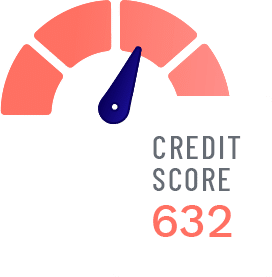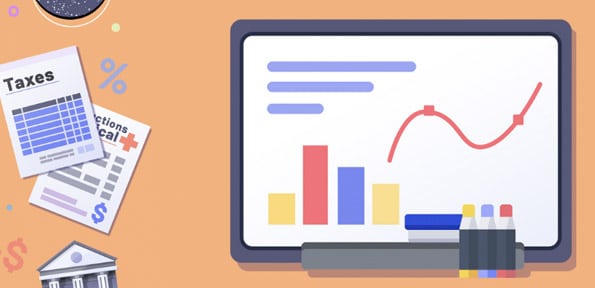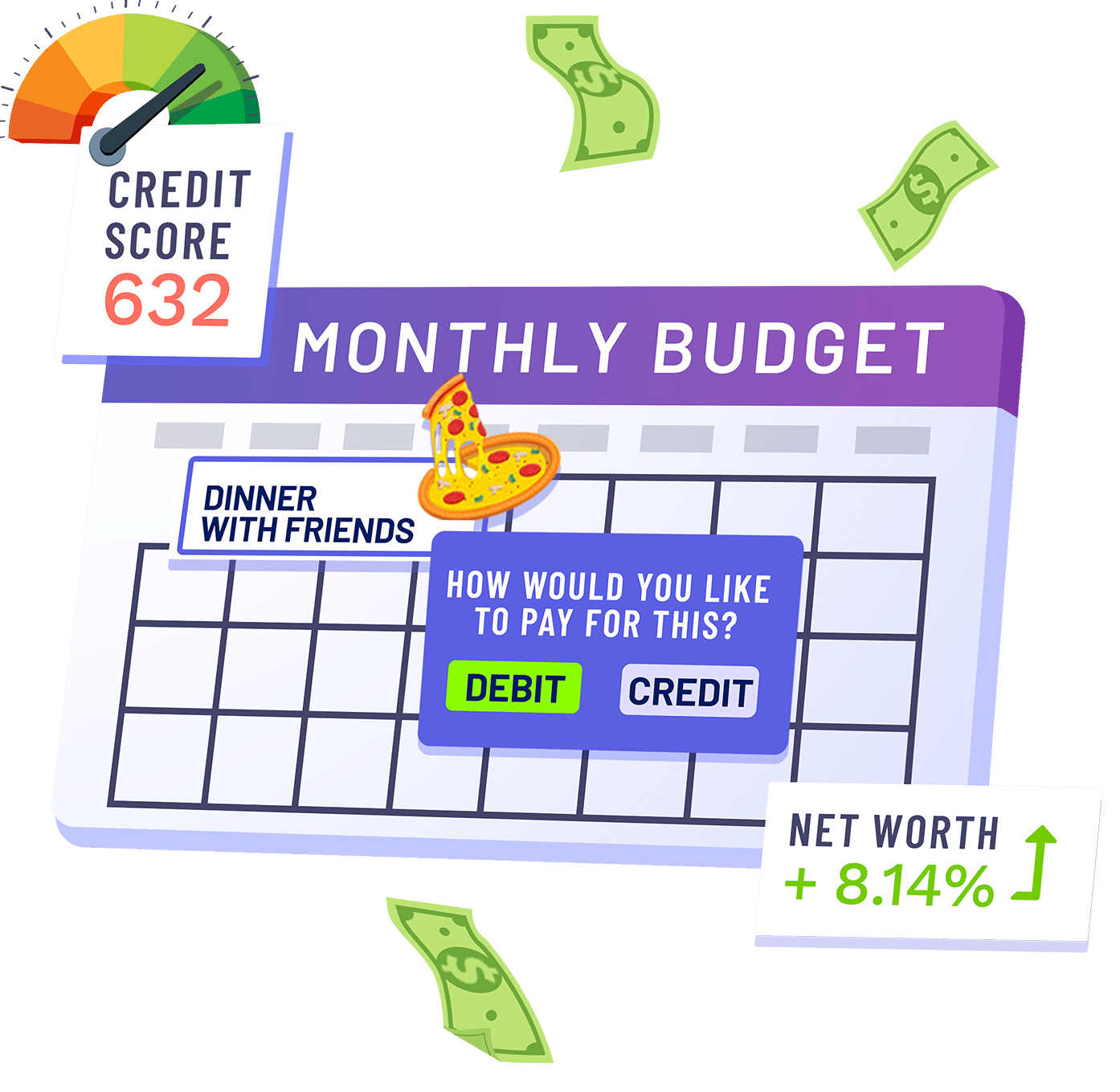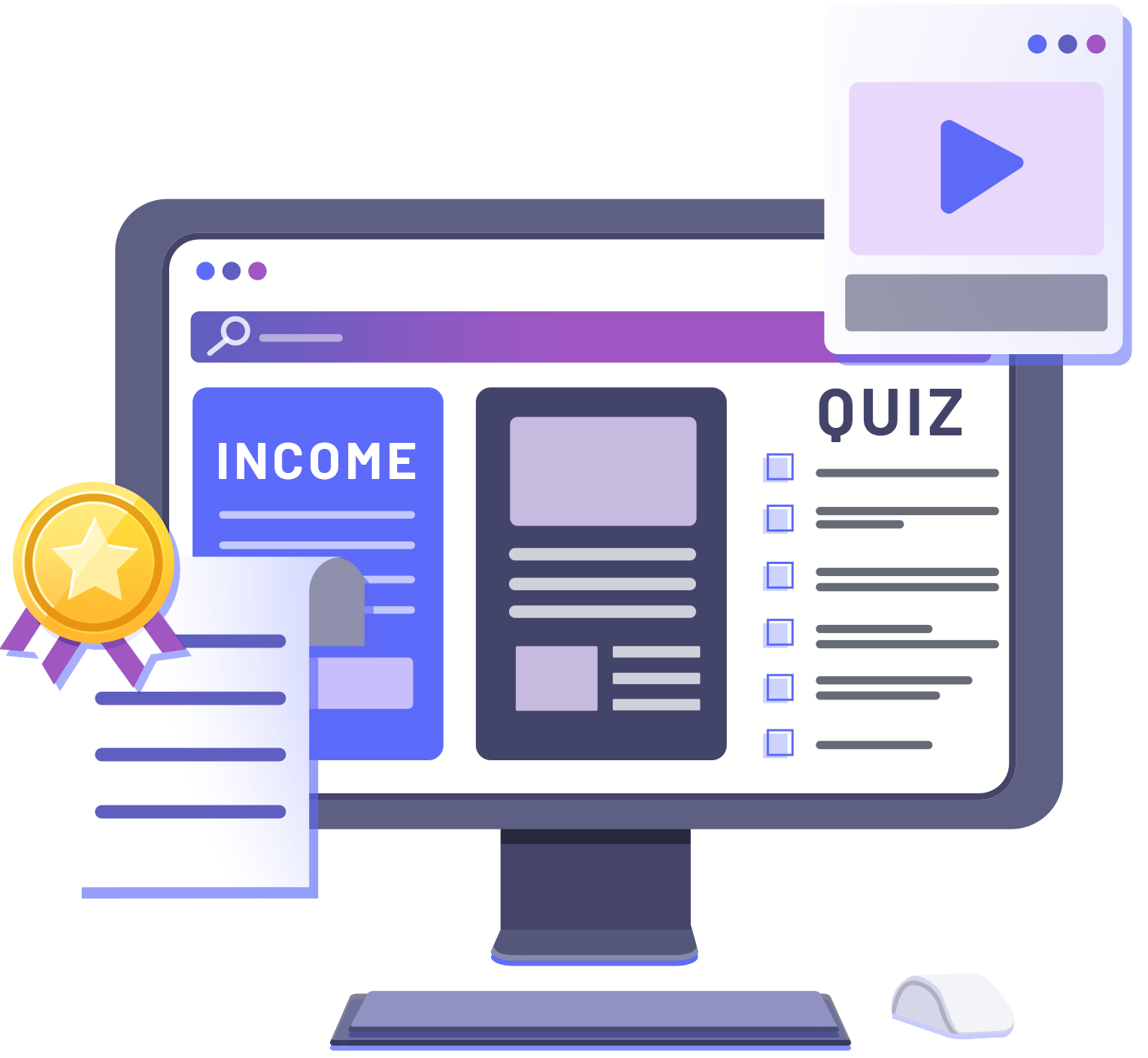| FI:058 Explain forms of financial exchange (cash, credit, debit, electronic funds transfer, etc.) |
|
|
|
|
|
|
| a. Define the following terms: cash, credit, debit, electronic funds transfer, negotiable instruments, promissory notes, holder in due course. |
Lesson – A Beginner’s Guide to Borrowing Wisely |
|
|
|
|
|
| b. Explain the need for forms of financial exchange. |
Lesson – What is Money? |
|
|
|
|
|
| c. Describe the advantages and disadvantages of different forms of financial exchange. |
Budget Game – Core Component |
|
|
|
|
|
| d. Discuss how credit and debit cards and checks are used as forms of financial exchange. |
Lesson – What is Money?
Lesson – Credit Cards: Terms, Fees, and More
Lesson – How Debit Cards Work |
|
|
|
|
|
| e. Discuss how negotiable instruments are used as forms of financial exchange. |
Lesson – Mortgage Options for First-Time Homebuyers
Lesson – The Car Buying Checklist
Lesson – The 6 Elements of a Binding Contract |
|
|
|
|
|
| FI:059 Identify types of currency (paper money, coins, banknotes, government bonds, treasury notes, etc.) (PQ) |
Activity |
Long-Term Game |
Comprehensive Chapter |
Short Lesson |
Interactive Calculator |
Graded Assessment |
| a. Define the following terms: currency, private currency, fiat currency, deposit money, representative money, commodity money, local currency, specie, and banknote. |
Lesson – From Gold Bars to Bank Loans |
|
|
|
|
|
| b. Discuss the importance of currency in an economy. |
Lesson – What is Money?
Lesson – From Gold Bars to Bank Loans
Lesson – How Global Trade Shapes Our Economy |
|
|
|
|
|
| c. Explain the advantages and disadvantages of fiat currency. |
Lesson – From Gold Bars to Bank Loans |
|
|
|
|
|
| d. Differentiate between coins and paper money. |
Lesson – From Gold Bars to Bank Loans |
|
|
|
|
|
| FI:060 Describe functions of money (medium of exchange, unit of measure, store of value) (PQ) |
Activity |
Long-Term Game |
Comprehensive Chapter |
Short Lesson |
Interactive Calculator |
Graded Assessment |
| a. Explain why money is used as a medium of exchange. |
Lesson – What is Money? |
|
|
|
|
|
| b. Discuss how money is used as a unit of measure. |
Lesson – What is Money? |
|
|
|
|
|
| c. Describe how money is used as a store of value. |
Lesson – What is Money? |
|
|
|
|
|
| d. Explain how money is used as an incentive. |
Lesson – Carrots, Sticks, and Your Wallet |
|
|
|
|
|
| FI:061 Describe sources of income and compensation (CS) |
Activity |
Long-Term Game |
Comprehensive Chapter |
Short Lesson |
Interactive Calculator |
Graded Assessment |
| a. Define the following terms: wage, salary, interest, rent, dividends, and transfer payments. |
Lesson – What’s in Your Compensation Package?
Lesson – What is Wealth? |
|
|
|
|
|
| b. Distinguish between earned and unearned income. |
Lesson – What is Wealth? |
|
|
|
|
|
| c. Explain the benefits and drawbacks of different sources of income. |
Lesson – What’s in Your Compensation Package? |
|
|
|
|
|
| d. Discuss the use of benefits as a form of compensation. e. Describe the relationship between education and income. |
Lesson – What’s in Your Compensation Package? |
|
|
|
|
|
| f. Discuss the influence of career choice on income. |
Lesson – What’s in Your Compensation Package? |
|
|
|
|
|
| g. Explain the risks inherent in relying on receipt of inheritances. |
Lesson – What is Wealth? |
|
|
|
|
|
| h. Discuss tax implications associated with sources of income. |
Lesson – Tax Basics You Need to Know
Lesson – Uncovering Hidden Income Taxes You Owe
Activity – Practice Filing The Form 1040 |
|
|
|
|
|
| FI:062 Explain the time value of money (CS) |
Activity |
Long-Term Game |
Comprehensive Chapter |
Short Lesson |
Interactive Calculator |
Graded Assessment |
| a. Define the terms time value of money, inflation, interest rate, present value, and compound interest. |
Lesson – How to Harness Your Money’s Full Potential
Lesson – The Impact of Inflation on Your Wallet
Lesson – The Magic of Compound Interest
Activity – Net Present Value (NPV) Calculator
Activity – Watch How Your Savings Could Grow |
|
|
|
|
|
| b. Describe how time impacts the value of money. |
Lesson – How to Harness Your Money’s Full Potential
Activity – Net Present Value (NPV) Calculator
Activity – Watch How Your Savings Could Grow
Activity – Crack the Code to Becoming a Millionaire |
|
|
|
|
|
| c. Explain information that is needed when considering the time value of money (i.e., date at which the dollar amount is measured and the interest rate applied). |
Lesson – How to Harness Your Money’s Full Potential
Activity – Net Present Value (NPV) Calculator |
|
|
|
|
|
| d. Explain the impact of inflation on the value of money. |
Lesson – The Impact of Inflation on Your Wallet |
|
|
|
|
|
| e. Discuss situations in which the present value is needed. |
Lesson – How to Harness Your Money’s Full Potential |
|
|
|
|
|
| FI:002 Explain the purposes and importance of credit (CS) LAP-FI-002 |
Activity |
Long-Term Game |
Comprehensive Chapter |
Short Lesson |
Interactive Calculator |
Graded Assessment |
| a. Define the term credit. |
Lesson – A Beginner’s Guide to Borrowing Wisely |
|
|
|
|
|
| b. Describe types of credit commonly extended to credit users (e.g., revolving credit, bank credit cards, consumer loans, etc.). |
Lesson – Credit Cards: Terms, Fees, and More
Lesson – The Car Buying Checklist
Lesson – Mortgage Options for First-Time Homebuyers |
|
|
|
|
|
| c. Identify sources of credit. |
Lesson – How to Use Debt to Your Advantage
Lesson – What to Do When You Need Money Fast
Lesson – Financing Your Education |
|
|
|
|
|
| d. Explain costs associated with the use of credit (e.g., APR, late fees, service charges, etc.). |
Lesson – A Beginner’s Guide to Borrowing Wisely |
|
|
|
|
|
| e. Discuss the advantages and disadvantages of fixed- and adjustable-rate credit. |
Lesson – A Beginner’s Guide to Borrowing Wisely
Lesson – Mortgage Options for First-Time Homebuyers |
|
|
|
|
|
| f. Describe costs associated with the extension of credit. |
Lesson – A Beginner’s Guide to Borrowing Wisely |
|
|
|
|
|
| g. Explain reasons that businesses extend credit. |
Lesson – A Beginner’s Guide to Borrowing Wisely |
|
|
|
|
|
| h. Describe the types of benefits credit users may receive from the use of credit. |
Lesson – A Beginner’s Guide to Borrowing Wisely |
|
|
|
|
|
| i. Describe legislation affecting the extension of credit. |
Lesson – Credit Cards: Terms, Fees, and More
Lesson – What Your Credit Report Says About You
Lesson – How to Negotiate With Creditors |
|
|
|
|
|
| FI:063 Explain legal responsibilities associated with consumer financial products and services (CS) |
Activity |
Long-Term Game |
Comprehensive Chapter |
Short Lesson |
Interactive Calculator |
Graded Assessment |
| a. Describe how consumers and financial institutions benefit from financial exchanges (i.e., both are legally protected at the time of the financial exchange as a result of the terms of the financial agreement). |
Lesson – Protect Yourself as a Consumer |
|
|
|
|
|
| b. Explain legal responsibilities of borrowers and lenders in financial exchanges. |
Lesson – Protect Yourself as a Consumer |
|
|
|
|
|
| c. Explain legal responsibilities of investors and brokers in financial exchanges. |
Lesson – How to Choose a Brokerage Account? |
|
|
|
|
|
| d. Identify regulations of consumer financial products and services (e.g., Truth in Lending Act, Federal Fair Debt Collection Practices Act, Equal Credit Opportunity Act). |
Lesson – A Beginner’s Guide to Borrowing Wisely
Lesson – How to Negotiate With Creditors
Lesson – Protect Yourself as a Consumer |
|
|
|
|
|
| e. Identify agencies that regulate consumer financial products and services (e.g., FDIC, SEC, CFPB, NCUA). |
Lesson – Choosing the Best Banking Option for You
Lesson – How to Choose a Brokerage Account?
Lesson – Protect Yourself as a Consumer |
|
|
|
|
|
| f. Describe legal responsibilities associated with electronic financial products and services. |
Lesson – Choosing the Best Banking Option for You |
|
|
|
|
|
| FI:270 Explain the need to save and invest (CS) |
Activity |
Long-Term Game |
Comprehensive Chapter |
Short Lesson |
Interactive Calculator |
Graded Assessment |
| a. Define the following terms: saving, investing, financial needs, and financial goals. |
Budget Game – Core Component
Lesson – Break Free From Money Stress with a Budget |
|
|
|
|
|
| b. Identify types of financial needs (e.g., college, retirement, wills, insurance, etc.). |
Lesson – A Strategy to Build Wealth, Not Debt |
|
|
|
|
|
| c. Discuss ways individuals meet financial needs. |
Budget Game – Core Component |
|
|
|
|
|
| d. Discuss the importance of setting financial goals to meet financial needs. |
Budget Game – Core Component
Lesson – Break Free From Money Stress with a Budget
Lesson – A Simple Yet Powerful Way to Build Wealth
Lesson – Evaluating Big-Ticket Purchases
Lesson – The Secret to a Comfortable Retirement |
|
|
|
|
|
| e. Explain the concept of using money to make money. |
Lesson – A Simple Yet Powerful Way to Build Wealth
Lesson – Why Invest in Stocks vs. Just Saving? |
|
|
|
|
|
| f. Distinguish between saving and investing. |
Budget Game – Core Component
Stock Game – Core Component |
|
|
|
|
|
| g. Compare the outcome of saving/investing early versus late in life. |
Activity – Get a Snapshot of Your Financial Health
Activity – Crack the Code to Becoming a Millionaire
Lesson – The Magic of Compound Interest
Lesson – A Strategy to Build Wealth, Not Debt |
|
|
|
|
|
| h. Describe ways individuals benefit from saving/investing. |
Budget Game – Core Component
Stock Game – Core Component |
|
|
|
|
|
FI:065 Set financial goals (CS)
Analyze financial needs and goals to determine financial requirements. |
Activity |
Long-Term Game |
Comprehensive Chapter |
Short Lesson |
Interactive Calculator |
Graded Assessment |
| a. Discuss the value of planning in meeting financial goals. |
Budget Game – Core Component
Lesson – A Strategic Way to Build Wealth, Not Debt
Lesson – Achieve Financial Goals with a Spending Plan |
|
|
|
|
|
| b. Identify obstacles to meeting financial goals. |
Budget Game – Core Component
Lesson – Achieve Financial Goals with a Spending Plan
Lesson – Proven Techniques to Stop Overspending |
|
|
|
|
|
| c. Describe characteristics of useful financial goals. |
Lesson – Break Free From Money Stress with a Budget
Lesson – A Strategy to Build Wealth, Not Debt |
|
|
|
|
|
| d. Explain a financial goal-setting process. |
Budget Game – Core Component
Lesson – A Simple Yet Powerful Way to Build Wealth
Lesson – Break Free From Money Stress with a Budget |
|
|
|
|
|
| e. Demonstrate procedures for setting financial goals. |
Budget Game – Core Component |
|
|
|
|
|
| FI:066 Develop personal budget (CS) |
Activity |
Long-Term Game |
Comprehensive Chapter |
Short Lesson |
Interactive Calculator |
Graded Assessment |
| a. Define the following terms: personal budget, income, and expenses. |
Budget Game – Core Component
Lesson – Break Free From Money Stress with a Budget |
|
|
|
|
|
| b. Identify common personal income and expenses. |
Budget Game – Core Component
Lesson – Break Free From Money Stress with a Budget
Lesson – A Simple Yet Powerful Way to Build Wealth |
|
|
|
|
|
| c. Distinguish between fixed and variable expenses. |
Budget Game – Core Component
Lesson – Break Free From Money Stress with a Budget |
|
|
|
|
|
| d. Discuss the importance of developing a personal budget to manage spending and reach financial goals. |
Budget Game – Core Component
Lesson – Proven Techniques to Stop Overspending |
|
|
|
|
|
| e. Explain steps for developing a personal budget. |
Budget Game – Core Component |
|
|
|
|
|
| f. Explain the role of ongoing tracking and analysis when budgeting. g. Demonstrate steps for developing a personal budget. |
Budget Game – Core Component |
|
|
|
|
|
FI:562 Determine personal net worth (CS)
Manage personal finances to achieve financial goals. |
Activity |
Long-Term Game |
Comprehensive Chapter |
Short Lesson |
Interactive Calculator |
Graded Assessment |
| a. Define the terms asset, liability, and net worth. |
Activity – Get a Snapshot of Your Financial Health
Lesson – A Strategy to Build Wealth, Not Debt |
|
|
|
|
|
| b. Identify personal assets. |
Budget Game – Core Component |
|
|
|
|
|
| c. Identify personal liabilities. |
Budget Game – Core Component |
|
|
|
|
|
| d. Explain the calculation of personal net worth. |
Budget Game – Core Component
Activity – Get a Snapshot of Your Financial Health |
|
|
|
|
|
| e. Discuss how knowing personal net worth can be beneficial. |
Lesson – A Strategy to Build Wealth, Not Debt |
|
|
|
|
|
| f. Prepare personal net worth statement. |
Activity – Get a Snapshot of Your Financial Health |
|
|
|
|
|
| FI:067 Explain the nature of tax liabilities (PQ) |
Activity |
Long-Term Game |
Comprehensive Chapter |
Short Lesson |
Interactive Calculator |
Graded Assessment |
| a. Define the term tax liability. |
Lesson – Tax Basics You Need to Know |
|
|
|
|
|
| b. Describe types of taxes (e.g., income, sales, property, excise, etc.). |
Lesson – Tax Basics You Need to Know
Lesson – Uncovering Hidden Income Taxes You Owe |
|
|
|
|
|
| c. Identify levels of government that collect taxes (i.e., federal, state, local). |
Budget Game – Core Component
Lesson – Income Tax Filing Tips & Tricks
Activity – Get Practice Filing a Sample Tax Return |
|
|
|
|
|
| d. Explain the purpose of taxes. |
Lesson – Tax Basics You Need to Know |
|
|
|
|
|
| e. Discuss who is required to pay taxes. |
Lesson – Income Tax Filing Tips & Tricks |
|
|
|
|
|
| FI:068 Interpret a pay stub (PQ) |
Activity |
Long-Term Game |
Comprehensive Chapter |
Short Lesson |
Interactive Calculator |
Graded Assessment |
| a. Define the following terms: pay period, gross income, net income, deduction, pension, 401(k), and FICA. |
Budget Game – Core Component
Lesson – Why Is My Paycheck So Small? |
|
|
|
|
|
| b. Explain the components of a pay stub. |
Budget Game – Core Component |
|
|
|
|
|
| c. Identify types of deductions that appear on pay stubs. |
Budget Game – Core Component
Lesson – Why Is My Paycheck So Small? |
|
|
|
|
|
| d. Discuss reasons for interpreting a pay stub. |
Lesson – The Ultimate Employee Guide |
|
|
|
|
|
| e. Explain procedures for interpreting a pay stub. |
Lesson – The Ultimate Employee Guide |
|
|
|
|
|
| f. Demonstrate how to interpret a pay stub. |
Lesson – The Ultimate Employee Guide |
|
|
|
|
|
| FI:560 Write checks (PQ) |
Activity |
Long-Term Game |
Comprehensive Chapter |
Short Lesson |
Interactive Calculator |
Graded Assessment |
| a. Explain the information that must be provided on checks. |
Budget Game – Core Component
Lesson – What is Money? |
|
|
|
|
|
| b. Describe how to fill out checks correctly. |
Budget Game – Core Component
Lesson – What is Money? |
|
|
|
|
|
| c. Discuss the importance of legibility in filling out checks. |
Lesson – What is Money? |
|
|
|
|
|
| d. Discuss how to place a stop payment on checks. |
Lesson – What is Money? |
|
|
|
|
|
| e. Describe how to endorse checks. |
Lesson – What is Money? |
|
|
|
|
|
| f. Demonstrate procedures for writing checks. |
Budget Game – Core Component
Lesson – What is Money? |
|
|
|
|
|
| FI:069 Maintain financial records (PQ) |
Activity |
Long-Term Game |
Comprehensive Chapter |
Short Lesson |
Interactive Calculator |
Graded Assessment |
| a. Define the following terms: maintain, checkbook register, savings register, deposit, and withdrawal. |
Lesson – Receipts: What to Keep and Why |
|
|
|
|
|
| b. Identify types of financial records that should be maintained (e.g., checkbook register, savings register). |
Lesson – Tame Your Financial Paperwork
Lesson – Balance Your Books in 10-Minutes
Lesson – Receipts: What to Keep and Why |
|
|
|
|
|
| c. Discuss reasons to keep bank account records up to date. |
Lesson – Tame Your Financial Paperwork
Lesson – Balance Your Books in 10-Minutes
Lesson – What Is a Tax Audit? |
|
|
|
|
|
| d. Discuss procedures used to maintain financial records. |
Lesson – Tame Your Financial Paperwork
Lesson – Balance Your Books in 10-Minutes |
|
|
|
|
|
| e. Demonstrate procedures used to maintain financial records. |
Lesson – Tame Your Financial Paperwork
Lesson – Balance Your Books in 10-Minutes |
|
|
|
|
|
| FI:070 Balance a bank account (PQ) |
Activity |
Long-Term Game |
Comprehensive Chapter |
Short Lesson |
Interactive Calculator |
Graded Assessment |
| a. Define the following terms: reconcile, bank statement, transaction, transaction fee, balance, and overdraft protection. |
Budget Game – Core Component
Lesson – Choosing the Best Banking Option for You |
|
|
|
|
|
| b. Explain the components of a bank statement. |
Budget Game – Core Component
Lesson – Choosing the Best Banking Option for You |
|
|
|
|
|
| c. Identify problems that may occur when bank statements are not reconciled. |
Lesson – Balance Your Books in 10-Minutes
Lesson – The Art of Juggling Many Bills in a Pinch |
|
|
|
|
|
| d. Discuss actions to take if a bank statement is incorrect. e. Explain procedures for balancing a bank account. |
Lesson – Balance Your Books in 10-Minutes |
|
|
|
|
|
| f. Demonstrate how to balance a bank account. |
Budget Game – Core Component
Lesson – Balance Your Books in 10-Minutes |
|
|
|
|
|
| FI:567 Explain the nature of charitable giving (PQ) |
Activity |
Long-Term Game |
Comprehensive Chapter |
Short Lesson |
Interactive Calculator |
Graded Assessment |
| a. Distinguish between the terms tax exempt and tax deductible. |
Lesson – A Guide to Effective Charitable Donations |
|
|
|
|
|
| b. Describe ways to give to charities. |
Lesson – A Guide to Effective Charitable Donations |
|
|
|
|
|
| c. Identify types of charitable-giving scams. |
Lesson – A Guide to Effective Charitable Donations |
|
|
|
|
|
| d. Discuss techniques for avoiding charitable-giving scams. |
Lesson – A Guide to Effective Charitable Donations |
|
|
|
|
|
| e. Explain criteria that can be used to evaluate a charitable organization. |
Lesson – A Guide to Effective Charitable Donations |
|
|
|
|
|
| f. Discuss how to check out a charity before contributing. |
Lesson – A Guide to Effective Charitable Donations |
|
|
|
|
|
| FI:782 Calculate the cost of credit (CS) |
Activity |
Long-Term Game |
Comprehensive Chapter |
Short Lesson |
Interactive Calculator |
Graded Assessment |
| a. Define the following terms: annual percentage rate, periodic interest rate, average daily balance, and cost of credit. |
Lesson – Credit Cards: Terms, Fees, and More |
|
|
|
|
|
| b. Explain how interest increases the cost of credit. |
Budget Game – Core Component
Lesson – Demystifying the Impact of Interest Rates |
|
|
|
|
|
| c. Discuss reasons for calculating the cost of credit. |
Lesson – Demystifying the Impact of Interest Rates |
|
|
|
|
|
| d. Demonstrate techniques for calculating the cost of credit. |
Activity – Calculate the True Cost of Credit Card Debt
Lesson – Getting Out of Debt: Debt Snowball and Debt Avalanche |
|
|
|
|
|
| FI:071 Demonstrate the wise use of credit (CS) |
Activity |
Long-Term Game |
Comprehensive Chapter |
Short Lesson |
Interactive Calculator |
Graded Assessment |
| a. Define the following terms: annual fee and late fee. |
Lesson – Credit Cards: Terms, Fees, and More |
|
|
|
|
|
| b. Discuss reasons to use credit wisely. |
Lesson – A Beginner’s Guide to Borrowing Wisely
Lesson – How to Use Debt to Your Advantage |
|
|
|
|
|
| c. Describe possible consequences of using credit unwisely. |
Budget Game – Core Component
Lesson – How Borrowers Manage Personal Debt
Lesson – What Is Bankruptcy?
Lesson – Getting Help With Debt Repayment
Lesson – Debt Relief: Is Consolidation the Answer?
Lesson – Getting Out of Debt: Debt Snowball and Debt Avalanche |
|
|
|
|
|
| d. Identify situations that result in credit-history problems. |
Lesson – What Your Credit Report Says About You |
|
|
|
|
|
| e. Discuss methods for selecting sources of credit. |
Lesson – What to Do When You Need Money Fast
Lesson – How to Use Debt to Your Advantage |
|
|
|
|
|
| f. Explain techniques to use credit wisely (e.g., limiting the number of credit cards, paying off credit balances, paying more than monthly minimum balance, and avoiding cash advances) . |
Lesson – Getting Out of Debt: Debt Snowball and Debt Avalanche
Lesson – Credit Cards: Terms, Fees, and More
Lesson – How Borrowers Manage Personal Debt |
|
|
|
|
|
| g. Monitor credit reports. |
Lesson – What Your Credit Report Says About You |
|
|
|
|
|
| h. Demonstrate ways to use credit wisely. |
Budget Game – Core Component |
|
|
|
|
|
| FI:072 Validate credit history (CS) |
Activity |
Long-Term Game |
Comprehensive Chapter |
Short Lesson |
Interactive Calculator |
Graded Assessment |
| a. Define the terms credit report, credit score/rating, and credit reporting agency. |
Lesson – What Your Credit Report Says About You |
|
|
|
|
|
| b. Explain reasons to check one’s credit history. |
Lesson – What Your Credit Report Says About You |
|
|
|
|
|
| c. Discuss methods for obtaining one’s credit history. |
Lesson – What Your Credit Report Says About You |
|
|
|
|
|
| d. Explain information included in a credit report. |
Lesson – What Your Credit Report Says About You |
|
|
|
|
|
| e. Discuss techniques used to validate one’s credit history. |
Lesson – What Your Credit Report Says About You |
|
|
|
|
|
| f. Describe techniques for disputing information found in a credit report. |
Lesson – What Your Credit Report Says About You |
|
|
|
|
|
| g. Demonstrate methods to validate a personal credit history. |
Lesson – What Your Credit Report Says About You |
|
|
|
|
|
| FI:783 Make responsible financial decisions (CS) |
Activity |
Long-Term Game |
Comprehensive Chapter |
Short Lesson |
Interactive Calculator |
Graded Assessment |
| a. Discuss reasons for considering the consequences of financial decisions. |
Budget Game – Core Component
Stock Game – Core Component
Lesson – The Door You Didn’t Open
Lesson – How to Harness Your Money’s Full Potential |
|
|
|
|
|
| b. Explain the importance of saving and investing regularly. |
Budget Game – Core Component
Stock Game – Core Component
Lesson – A Simple Yet Powerful Way to Build Wealth |
|
|
|
|
|
| c. Discuss the importance of reading and understanding financial terms and offers. |
Lesson – The 6 Elements of a Binding Contract
Lesson – Protect Yourself as a Consumer |
|
|
|
|
|
| d. Describe the benefits of comparison shopping. |
Budget Game – Core Component
Lesson – How Do You Stop Impulse Purchases? |
|
|
|
|
|
| e. Describe the impact of impulse spending. |
Lesson – How Do You Stop Impulse Purchases?
Lesson – Proven Techniques to Stop Overspending |
|
|
|
|
|
| f. Compare costs and benefits of buying vs. renting/leasing. |
Activity – Rent or Buy: Which is Right for You?
Activity – Find Out Your Monthly Home Budget
Lesson – Find Your Best Car Loan Deal |
|
|
|
|
|
| g. Explain financial scams to avoid. |
Lesson – How to Avoid Identity Theft, Scams & Fraud |
|
|
|
|
|
| h. Demonstrate how to make responsible financial decisions. |
Budget Game – Core Component
Activity – Model Your Financial Future
Activity – Net Present Value (NPV) Calculator
Activity – Find Out Your Monthly Home Budget |
|
|
|
|
|
| FI:073 Protect against identity theft (CS) |
Activity |
Long-Term Game |
Comprehensive Chapter |
Short Lesson |
Interactive Calculator |
Graded Assessment |
| a. Define the following terms: identity theft, phishing. |
Lesson – How to Avoid Identity Theft, Scams & Fraud |
|
|
|
|
|
| b. Explain the importance of guarding against identity theft. |
Lesson – How to Avoid Identity Theft, Scams & Fraud |
|
|
|
|
|
| c. Identify ways in which one’s identity may be stolen. |
Lesson – How to Avoid Identity Theft, Scams & Fraud |
|
|
|
|
|
| d. Describe problems that may occur if a person becomes the victim of identity theft. |
Lesson – How to Avoid Identity Theft, Scams & Fraud |
|
|
|
|
|
| e. Explain what an individual should do if they fall victim to identity theft. |
Lesson – How to Avoid Identity Theft, Scams & Fraud |
|
|
|
|
|
| f. Discuss methods to protect against identity theft. |
Lesson – How to Avoid Identity Theft, Scams & Fraud |
|
|
|
|
|
| g. Demonstrate methods to protect against identity theft. |
Lesson – How to Avoid Identity Theft, Scams & Fraud |
|
|
|
|
|
| FI:565 Pay bills (CS) |
Activity |
Long-Term Game |
Comprehensive Chapter |
Short Lesson |
Interactive Calculator |
Graded Assessment |
| a. Identify frequently paid bills. |
Budget Game – Core Component
Lesson – Break Free From Money Stress with a Budget
Lesson – Achieve Financial Goals with a Spending Plan |
|
|
|
|
|
| b. Explain information usually found on bills. |
Budget Game – Core Component |
|
|
|
|
|
| c. Discuss the importance of verifying charges identified on billing statements. |
Lesson – Balance Your Books in 10-Minutes |
|
|
|
|
|
| d. Describe methods to contest incorrect bills. |
Lesson – Balance Your Books in 10-Minutes |
|
|
|
|
|
| e. Describe ways that bills can be paid (e.g., manually, electronically, direct withdrawal, etc.). |
Lesson – Automatic Payments: Convenience vs. Risk
Lesson – The Art of Juggling Many Bills in a Pinch |
|
|
|
|
|
| f. Discuss the impact of failing to pay bills on time. |
Budget Game – Core Component
Lesson – What Your Credit Report Says About You |
|
|
|
|
|
| g. Demonstrate procedures for paying bills. |
Budget Game – Core Component |
|
|
|
|
|
| FI:625 Apply for a consumer loan (SP) |
Activity |
Long-Term Game |
Comprehensive Chapter |
Short Lesson |
Interactive Calculator |
Graded Assessment |
| a. Explain factors that affect whether a person will be granted a loan (e.g., character, capacity, collateral). |
Lesson – Credit Cards: Terms, Fees, and More
Lesson – A Beginner’s Guide to Borrowing Wisely |
|
|
|
|
|
| b. Discuss factors to consider in selecting a consumer loan to obtain. |
Lesson – A Beginner’s Guide to Borrowing Wisely |
|
|
|
|
|
| c. Describe how APR impacts choice of loans. |
Lesson – A Beginner’s Guide to Borrowing Wisely |
|
|
|
|
|
| d. Explain the role of cosigners when applying for a loan. |
Lesson – A Beginner’s Guide to Borrowing Wisely |
|
|
|
|
|
| e. Identify documentation that must be supplied when applying for a consumer loan. |
Lesson – A Beginner’s Guide to Borrowing Wisely |
|
|
|
|
|
| f. Identify information that must be provided on a consumer loan application. |
Lesson – A Beginner’s Guide to Borrowing Wisely |
|
|
|
|
|
| g. Demonstrate procedures for applying for a consumer loan. |
Lesson – A Beginner’s Guide to Borrowing Wisely
Lesson – The Car Buying Checklist
Lesson – Mortgage Options for First-Time Homebuyers |
|
|
|
|
|
| FI:568 Control debt (CS) |
Activity |
Long-Term Game |
Comprehensive Chapter |
Short Lesson |
Interactive Calculator |
Graded Assessment |
| a. Define the terms insolvent, total debt, total assets, bankruptcy, debt consolidation, secured debt, unsecured debt, forbearance, foreclosure, and bankruptcy. |
Lesson – How Borrowers Manage Personal Debt
Lesson – What Is Bankruptcy? |
|
|
|
|
|
| b. Identify causes of excessive debt. |
Lesson – Credit Cards: Terms, Fees, and More
Lesson – How to Use Debt to Your Advantage |
|
|
|
|
|
| c. Explain how contacting creditors can help when excessive debt occurs. |
Lesson – How to Negotiate With Creditors |
|
|
|
|
|
| d. Discuss options that delinquent borrowers can use to control debt (e.g., repayment plan, forbearance, loan modification, etc.). |
Lesson – Getting Help With Debt Repayment
Lesson – How Borrowers Manage Personal Debt
Lesson – Debt Relief: Is Consolidation the Answer?
Lesson – Getting Out of Debt: Debt Snowball and Debt Avalanche |
|
|
|
|
|
| e. Discuss actions creditors can take when individuals fail to pay their loans (e.g., use of debt collectors, garnishment, repossession, foreclosure) |
Lesson – What Is Bankruptcy? |
|
|
|
|
|
| f. Identify warning signs of debt crisis. |
Lesson – How to Use Debt to Your Advantage
Lesson – How Borrowers Manage Personal Debt |
|
|
|
|
|
| g. Explain the nature of bankruptcy. |
Lesson – What Is Bankruptcy? |
|
|
|
|
|
| h. Discuss the impact of bankruptcy (e.g., on credit reports, future credit acquisition, employment, etc.). i. Demonstrate ways to control debt. |
Lesson – What Is Bankruptcy? |
|
|
|
|
|
| i. Demonstrate ways to control debt. |
Budget Game – Core Component
Lesson – Getting Out of Debt: Debt Snowball and Debt Avalanche |
|
|
|
|
|
| FI:074 Prepare personal income tax forms (CS) |
Activity |
Long-Term Game |
Comprehensive Chapter |
Short Lesson |
Interactive Calculator |
Graded Assessment |
| a. Define the terms adjusted gross income, 1040 tax form, taxable income, exemptions, and deductions. |
Budget Game – Core Component
Lesson – Income Tax Filing Tips & Tricks
Activity – Get Practice Filing a Sample Tax Return |
|
|
|
|
|
| b. Identify criteria for filing personal income tax forms. |
Budget Game – Core Component
Lesson – Income Tax Filing Tips & Tricks
Activity – Get Practice Filing a Sample Tax Return |
|
|
|
|
|
| c. Describe the information contained on a W-2 form. |
Lesson – Income Tax Filing Tips & Tricks
Activity – Get Practice Filing a Sample Tax Return |
|
|
|
|
|
| d. Explain an employer’s responsibility for providing employees with W-2 forms. |
Lesson – Income Tax Filing Tips & Tricks
Activity – Get Practice Filing a Sample Tax Return |
|
|
|
|
|
| e. Identify forms of income that must be reported on personal income tax forms. |
Activity – Get Practice Filing a Sample Tax Return
Lesson – Income Tax Filing Tips & Tricks
Lesson – Uncovering Hidden Income Taxes You Owe |
|
|
|
|
|
| f. Demonstrate procedures for preparing a personal income tax form. |
Budget Game – Core Component
Activity – Get Practice Filing a Sample Tax Return |
|
|
|
|
|
| FI:831 Discuss options for financing a college education (CS) |
Activity |
Long-Term Game |
Comprehensive Chapter |
Short Lesson |
Interactive Calculator |
Graded Assessment |
| a. Identify different types of higher education (e.g., college, university, non-profit, for-profit, public, private, 4-year institution, 2-year institution). |
Lesson – Planning Your Career Path
Lesson – Go to College or Start Working? |
|
|
|
|
|
| b. Identify costs associated with attending a college/university. |
Lesson – Planning Your Career Path
Lesson – Go to College or Start Working?
Lesson – Financing Your Education |
|
|
|
|
|
| c. Discuss methods to save for a college education (e.g., 529 plans, mutual funds). |
Lesson – Financing Your Education
Lesson – Planning Your Career Path
Lesson – Go to College or Start Working? |
|
|
|
|
|
| d. Discuss aid sources for financing a college education (e.g., scholarships, grants, loans). |
Lesson – Financing Your Education |
|
|
|
|
|
| e. Distinguish between scholarships and grants. |
Lesson – Financing Your Education |
|
|
|
|
|
| f. Explain the role of financial aid in funding a college education. |
Lesson – Financing Your Education |
|
|
|
|
|
| g. Discuss the federal student aid application and approval process. |
Lesson – Financing Your Education |
|
|
|
|
|
| h. Describe the student loan repayment process. |
Lesson – Financing Your Education |
|
|
|
|
|
| FI:569 Discuss the nature of retirement planning (CS) |
Activity |
Long-Term Game |
Comprehensive Chapter |
Short Lesson |
Interactive Calculator |
Graded Assessment |
| a. Define the term retirement planning, asset allocation, and vesting. |
Lesson – The Secret to a Comfortable Retirement
Lesson – What is Wealth?
Lesson – Why You Should Diversify Your Portfolio |
|
|
|
|
|
| b. Explain the importance of starting early when planning for retirement. |
Lesson – The Secret to a Comfortable Retirement
Lesson – The Magic of Compound Interest
Activity – Crack the Code to Becoming a Millionaire
Activity – Watch How Your Savings Could Grow |
|
|
|
|
|
| c. Discuss factors to consider when planning for retirement (e.g., inflation rates, health care needs, housing needs/costs, desired retirement age, etc.) |
Lesson – The Secret to a Comfortable Retirement |
|
|
|
|
|
| d. Distinguish between defined benefit retirement plans and defined contribution retirement plans. |
Lesson – The Secret to a Comfortable Retirement |
|
|
|
|
|
| e. Cite an example of a defined benefit retirement plan (e.g., pension plan). |
Lesson – The Secret to a Comfortable Retirement |
|
|
|
|
|
| f. Cite an example of a defined contribution retirement plan (e.g., 401(k), 403(b)). |
Lesson – The Secret to a Comfortable Retirement |
|
|
|
|
|
| g. Distinguish between an individual retirement account (IRA) and a Roth IRA. |
Lesson – The Secret to a Comfortable Retirement |
|
|
|
|
|
| h. Discuss protections that are in place to protect employees’ retirement plans. |
Lesson – The Secret to a Comfortable Retirement |
|
|
|
|
|
| i. Explain the relationship between Social Security benefits and a benefit retirement plan. |
Lesson – The Secret to a Comfortable Retirement
Lesson – The Ultimate Employee Guide |
|
|
|
|
|
| j. Discuss how the amount of Social Security benefits received at retirement is determined. |
Lesson – The Secret to a Comfortable Retirement |
|
|
|
|
|
| k. Discuss how the use of asset allocation protects savings and investments. |
Lesson – The Secret to a Comfortable Retirement |
|
|
|
|
|
| l. Describe techniques that can be used to close the gap between retirement savings and retirement expenses. |
Lesson – The Secret to a Comfortable Retirement
Lesson – The Magic of Compound Interest
Activity – Crack the Code to Becoming a Millionaire
Activity – Watch How Your Savings Could Grow |
|
|
|
|
|
| FI:075 Describe types of financial-services providers (CS) |
Activity |
Long-Term Game |
Comprehensive Chapter |
Short Lesson |
Interactive Calculator |
Graded Assessment |
| a. Identify types of financial-services providers. |
Lesson – Choosing the Best Banking Option for You
Lesson – How to Choose a Brokerage Account? |
|
|
|
|
|
| b. Describe banking services. |
Lesson – Choosing the Best Banking Option for You |
|
|
|
|
|
| c. Compare types of banking institutions. |
Lesson – Choosing the Best Banking Option for You |
|
|
|
|
|
| d. Discuss investment services. |
Lesson – Choosing the Best Banking Option for You
Lesson – How to Choose a Brokerage Account? |
|
|
|
|
|
| e. Explain services offered by insurance companies. |
Lesson – Knowing Your Risks & Risk Tolerance |
|
|
|
|
|
| f. Describe intermediation or advisory services (e.g., stock brokers, discount brokers, etc.). |
Lesson – How to Choose a Brokerage Account?
Lesson – Do You Need a Tax Professional?
Lesson – Getting Help With Debt Repayment |
|
|
|
|
|
| g. Discuss online services provided by financial institutions. |
Lesson – Choosing the Best Banking Option for You
Lesson – How to Choose a Brokerage Account? |
|
|
|
|
|
| FI:076 Discuss considerations in selecting a financial-services provider (CS) |
Activity |
Long-Term Game |
Comprehensive Chapter |
Short Lesson |
Interactive Calculator |
Graded Assessment |
| a. Discuss situations requiring financial-services providers. |
Lesson – Choosing the Best Banking Option for You
Lesson – How to Choose a Brokerage Account? |
|
|
|
|
|
| b. Describe ways in which financial-services providers are paid. |
Lesson – Choosing the Best Banking Option for You
Lesson – How to Choose a Brokerage Account? |
|
|
|
|
|
| c. Explain obstacles in relying on the advice of financial-services providers. |
Lesson – Choosing the Best Banking Option for You
Lesson – How to Choose a Brokerage Account? |
|
|
|
|
|
| d. Explain factors used to evaluate financial-services providers. |
Lesson – Choosing the Best Banking Option for You
Lesson – How to Choose a Brokerage Account? |
|
|
|
|
|
| FI:077 Explain types of investments (CS) LAP-FI-077 |
Activity |
Long-Term Game |
Comprehensive Chapter |
Short Lesson |
Interactive Calculator |
Graded Assessment |
| a. Define the following terms: savings accounts, money market accounts, certificates of deposit, bonds, lending investments, stocks, mutual funds, collectibles, ownership investments, securities. |
Stock Game – Core Component
Investing101 Course – Chapter 1: Introduction To Investing
Lesson – How to Develop an Investing Strategy
Lesson – A Simple Explanation of ETFs
Lesson – The Pros and Cons of Mutual Funds
Lesson – A Beginner’s Guide to Investing in Stocks |
|
|
|
|
|
| b. Explain the relationship between risk and return. |
Stock Game – Core Component
Lesson – Why You Should Diversify Your Portfolio |
|
|
|
|
|
| c. Distinguish between lending and ownership investments. |
Stock Game – Core Component
Lesson – A Beginner’s Guide to Investing in Stocks
Lesson – Getting Started with Bond Investing
Lesson – Decoding What Moves The Market |
|
|
|
|
|
| d. Identify types of lending investments (e.g., savings accounts, money market accounts, certificates of deposit, and bonds). |
Investing101 Course – Chapter 1: Introduction To Investing
Lesson – Getting Started with Bond Investing
Video – How to Trade Bonds?
Lesson – How to Develop an Investing Strategy |
|
|
|
|
|
| e. Describe the risks and returns associated with lending investments. |
Stock Game – Core Component
Lessons – Getting Started with Bond Investing
Lesson – Knowing Your Risks & Risk Tolerance
|
|
|
|
|
|
| f. Identify types of ownership investments (e.g., stocks, mutual funds, collectibles, and real estate). |
Investing101 Course – Chapter 1: Introduction To Investing
Lesson – How to Develop an Investing Strategy
Lesson – A Beginner’s Guide to Investing in Stocks
Lesson – The Pros and Cons of Mutual Funds |
|
|
|
|
|
| g. Explain the risks and returns associated with ownership investments. |
Stock Game – Core Component
Investing101 Course – Chapter 2: How the Stock Market Works and Why It Moves
Activity – Model Your Financial Future
Lesson – Knowing Your Risks & Risk Tolerance
Lesson – Why Invest in Stocks vs. Just Saving?
Lesson – Why You Should Diversify Your Portfolio |
|
|
|
|
|
| FI:081 Describe the concept of insurance (CS) |
Activity |
Long-Term Game |
Comprehensive Chapter |
Short Lesson |
Interactive Calculator |
Graded Assessment |
| a. Define the following terms: insurance, premium, deductible, coverage, and liability. |
Lesson – Why Health Insurance is so Expensive |
|
|
|
|
|
| b. Discuss the relationship between risk and insurance. |
Lesson – Knowing Your Risks & Risk Tolerance |
|
|
|
|
|
| c. Explain the purpose of insurance. |
Lesson – Knowing Your Risks & Risk Tolerance |
|
|
|
|
|
| d. Identify common types of insurance (e.g., property, liability, health, disability, life). |
Lesson – What’s Not Covered in Renter’s Insurance?
Lesson – What Damage Does Home Insurance Cover?
Lesson – Rules for Renters & Homeowners
Lesson – Car Insurance: How to Lower Your Rates
Lesson – Life Insurance: The Ultimate Safety Net
Lesson – Don’t Let Disability Derail Your Finances
Lesson – Why Health Insurance is So Expensive |
|
|
|
|
|
| e. Describe insurance needs at different stages in life. |
Lesson – What’s in Your Compensation Package?
Lesson – Is an Annuity Right for You?
Lesson – Life Insurance: The Ultimate Safety Net |
|
|
|
|
|
| f. Discuss the consequences of not having insurance or being underinsured. |
Lesson – What’s Not Covered in Renter’s Insurance?
Lesson – What Damage Does Home Insurance Cover?
Lesson – Rules for Renters & Homeowners
Lesson – Car Insurance: How to Lower Your Rates
Lesson – Life Insurance: The Ultimate Safety Net
Lesson – Don’t Let Disability Derail Your Finances |
|
|
|
|
|
| g. Explain how insurance works. |
Lesson – Knowing Your Risks & Risk Tolerance |
|
|
|
|
|
| FI:571 Determine insurance needs (SP) |
Activity |
Long-Term Game |
Comprehensive Chapter |
Short Lesson |
Interactive Calculator |
Graded Assessment |
| a. Explain how determining life insurance needs differs from determining other insurance needs. |
Lesson – Life Insurance: The Ultimate Safety Net |
|
|
|
|
|
| b. Describe factors to consider when determining the amount of insurance needed. |
Lesson – Life Insurance: The Ultimate Safety Net |
|
|
|
|
|
| c. Discuss information needed to calculate insurance needs. |
Lesson – Life Insurance: The Ultimate Safety Net
Lesson – What Damage Does Home Insurance Cover?
Lesson – Why Health Insurance is So Expensive |
|
|
|
|
|
| d. Demonstrate procedures for determining insurance needs. |
Lesson – Life Insurance: The Ultimate Safety Net
Lesson – What Damage Does Home Insurance Cover?
Lesson – Why Health Insurance is So Expensive |
|
|
|
|
|
| PD:154 Describe types of personal banking products and services (CS) |
|
|
|
|
|
|
| a. Define the following terms: overdraft protection, Automated Clearing House (ACH), asset management, and lockbox. |
Lesson – Choosing the Best Banking Option for You |
|
|
|
|
|
| b. Discuss common types of lending products and services (e.g., mortgages, vehicle loans, lines of credit, credit cards, cash advances, debt consolidation, etc.). |
Lesson – Credit Cards: Terms, Fees, and More
Lesson – How to Use Debt to Your Advantage |
|
|
|
|
|
| c. Explain deposit account products and services (e.g., checking accounts, savings accounts, certificates of deposit [CDs], debit/ATM cards, overdraft protection, etc.). |
Budget Game – Core Component
Lesson – Choosing the Best Banking Option for You
Lesson – Building An Investing Strategy |
|
|
|
|
|
| d. Describe common electronic banking services (e.g., wire transfers, online banking, online bill pay, electronic funds transfer [EFT] payments, automated teller machines [ATMs], mobile banking, etc.). |
Lesson – Choosing the Best Banking Option for You |
|
|
|
|
|
| e. Identify asset management services (e.g., trust services, safety deposit boxes, etc.). |
Lesson – Choosing the Best Banking Option for You |
|
|
|
|
|
| f. Identify customer-service channels frequently used in personal banking (e.g., brick and mortar branches, call centers, mobile app, etc.). |
Lesson – Choosing the Best Banking Option for You |
|
|
|
|
|
| g. Describe miscellaneous common personal banking products and services (e.g., cashier’s checks, certified checks, money orders, notary services, etc.). |
Lesson – Choosing the Best Banking Option for You |
|
|
|
|
|












